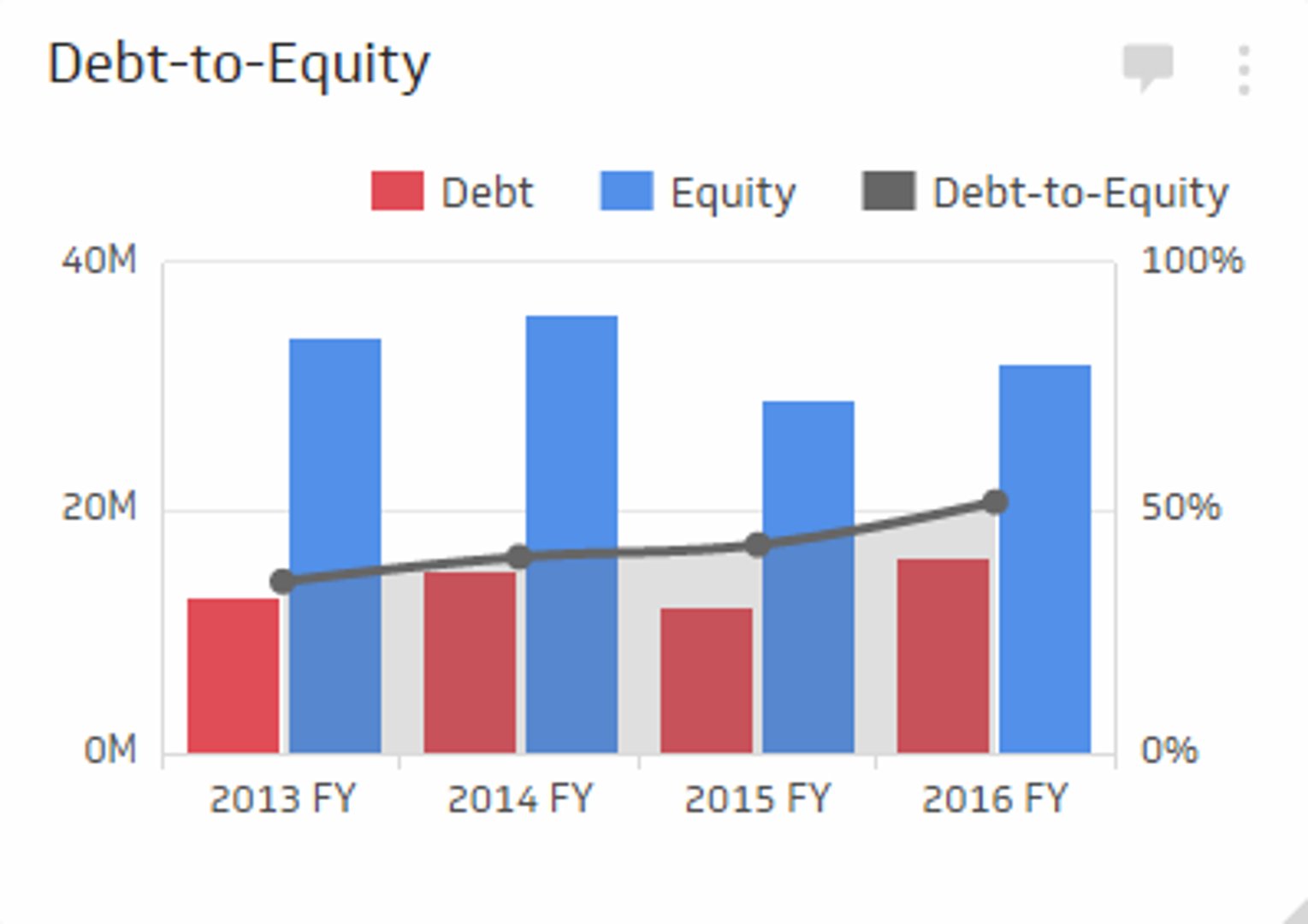
For example, if a company’s total debt is $20 million and its shareholders’ equity is $100 million, then the debt-to-equity ratio is 0.2. This means that for every dollar of equity, the company has 20 cents of debt, or leverage. When evaluating a company’s debt-to-equity (D/E) ratio, it’s crucial to take into account the industry in which the company operates. Different industries have varying capital requirements and growth patterns, meaning that a D/E ratio that is typical in one sector might be alarming in another.
- This looks at the total liabilities of a company in comparison to its total assets.
- In other words, the ratio alone is not enough to assess the entire risk profile.
- Therefore, it is essential to align the ratio with the industry averages and the company’s financial strategy.
Excel Formula for Debt-to-Equity Ratio

However, if the additional cost of debt financing outweighs the additional income that it generates, then the share price may drop. The cost of debt and a company’s ability to service it can vary with market conditions. As a result, borrowing that seemed prudent at first can prove unprofitable later under different circumstances. The debt-to-equity ratio is a financial ratio that measures how much debt a company has relative to its shareholders’ equity.
Is an increase in the debt-to-equity ratio bad?
A balanced approach to capital structure management is essential to maintain a healthy debt/equity ratio. This can cause an inconsistency in the measurement of the debt-equity ratio because equity will usually be understated relative to debt where book values are used. Using market values for both debt and equity removes such inconsistencies and therefore provides a better reflection of the financial risk of an organization. It suggests that a company relies heavily on borrowing to fund its operations, often due to insufficient internal finances.
Real-World Example: Comparing Debt/Equity Ratios in the Technology Industry
For example, asset-heavy industries such as utilities and transportation tend to have higher D/E ratios because their business models require more debt to finance their large capital expenditures. Tesla had total liabilities of $30,548,000 and total shareholders’ equity of $30,189,000. Debt financing happens when a company raises money to finance growth and expansion through selling debt instruments to individuals or institutional investors to fund its working capital or capital expenditures.
How to Compute Debt to Equity Ratio
Because debt is inherently risky, lenders and investors tend to favor businesses with lower D/E ratios. For shareholders, it means a decreased probability of bankruptcy in the event of an economic downturn. A company with a higher ratio than its industry average, therefore, may have difficulty securing additional funding from either source.
What Is the Debt Ratio?
Our writing and editorial staff are a team of experts holding advanced financial designations and have written for most major financial media publications. Our work has been directly cited by organizations including Entrepreneur, Business Insider, Investopedia, Forbes, CNBC, and many others. This team of experts helps Finance Strategists maintain the highest level of accuracy and professionalism possible. At Finance Strategists, we partner with financial experts to ensure the accuracy of our financial content. The cash ratio is a useful indicator of the value of the firm under a worst-case scenario. Aside from that, they need to allocate capital expenditures for upgrades, maintenance, and expansion of service areas.
If a D/E ratio becomes negative, a company may have no choice but to file for bankruptcy. If the D/E ratio of a company is negative, it means the liabilities are greater than the assets. One limitation of the D/E ratio is that the number does not provide a definitive assessment of a company. In other words, the ratio alone is not enough to assess the entire risk profile.
Whether the ratio is high or low is not the bottom line of whether one should invest in a company. As a measure of leverage, debt-to-equity can show how aggressively a company is using debt to fund its growth. It is possible that the debt-to-equity ratio may be considered too low, as well, which is an indicator that a company is relying too heavily on its own equity to fund operations.
The concept of comparing total assets to total debt also relates to entities that may not be businesses. For example, the United States Department of Agriculture keeps a close eye on how the relationship between farmland assets, debt, and equity change over time. A ratio greater than 1 shows that a considerable amount of a company’s assets are funded by debt, which means the company has more liabilities than assets. A high ratio indicates that a company may be at risk of default on its loans if interest rates suddenly rise.
Utilities and financial services typically have the highest D/E ratios, while service industries have the lowest. Different industries vary in D/E ratios because some industries may have intensive capital compared to others. The principal payment and interest expense are also what is cash flow and why is it important for businesses fixed and known, supposing that the loan is paid back at a consistent rate. It enables accurate forecasting, which allows easier budgeting and financial planning. On the other hand, when a company sells equity, it gives up a portion of its ownership stake in the business.
A debt-to-equity-ratio that’s high compared to others in a company’s given industry may indicate that that company is overleveraged and in a precarious position. Gearing ratios constitute a broad category of financial ratios, of which the D/E ratio is the best known. « In the last six years, you have seen this industry navigate two rounds of bankruptcy waves where companies in the energy sector had to navigate highly leveraged balance sheets with meager energy prices, » he says.

